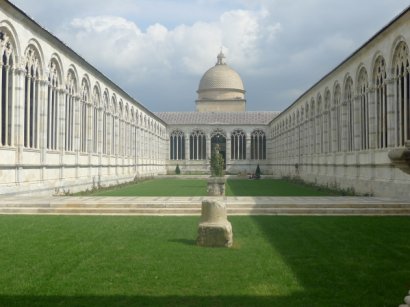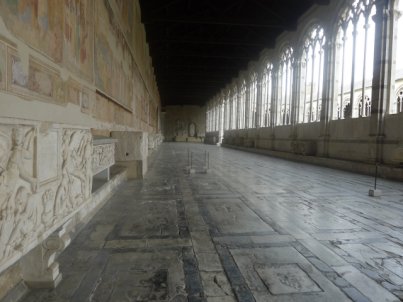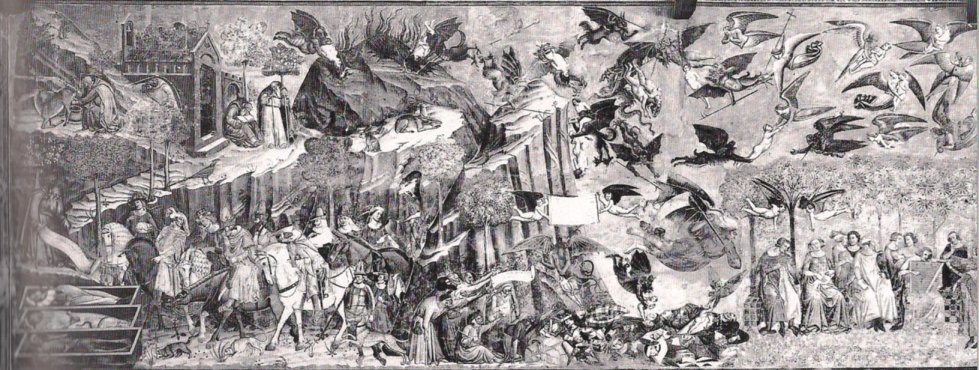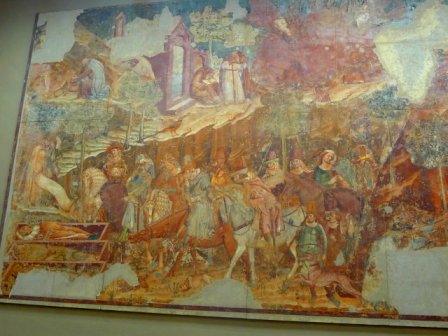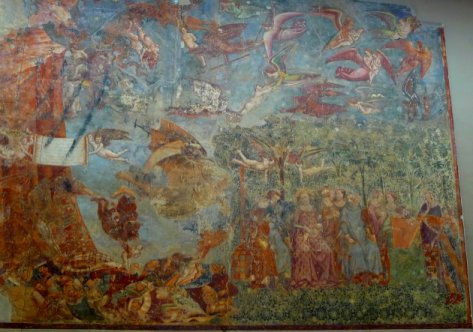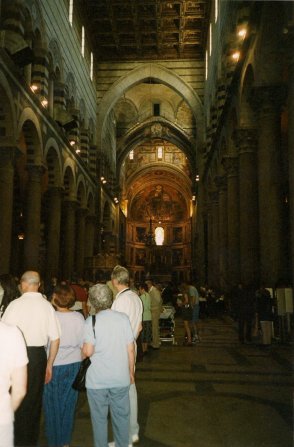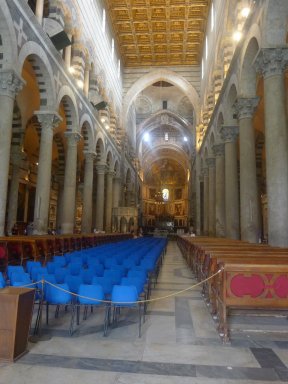|
The Campo Santo |
|
| The Campo Santo is an ancient burial ground; according to legend, the soil here was brought from Golgotha itself, and corpses buried there decayed within 24 hours. | |
|
|
|
| Up to now I have been
talking approvingly of art that is still where it was meant to
be. The Campo Santo illustrates one of the drawbacks. If art is
difficult to move, such as fresco, it is difficult to take it to a safe
place in time of war. In July 1944 part of an incendiary bomb hit the
monument. It was impossible to put out the fire, and the lead roof
melted. Many of the preserved sarcophagi were destroyed, and the frescos
were severely damaged. This was a huge tragedy; these frescos were
among the most remarkable in Italy. In recent years much effort has been made to restore the frescos, but it is an enormous task. Those that have been restored have returned to the Campo Santo, but not necessarily in their original positions. The underdrawings are on display in the fascinating Museo delle Sinopie on the other side of the Piazza. On our visit, sadly, there were very few people visiting the museum or the Campo Santo itself, despite crowds outside taking their leaning tower photographs. I'm going to look at one fresco sequence in particular, the one known as the Triumph of Death, attributed to Buonamico Buffalmacco and painted between 1330 and 1340. It is impossible to do justice to this here. Its size and damaged condition make it hard to work out what is actually happening; besides, the narrative it presents is unique so we do not have other works of art to 'fill in the gaps'. Below are black and white photographs showing the pre-war view: below them, my photographs show what the frescos look like now. |
|
|
|
|
|
|
|
|
|
|
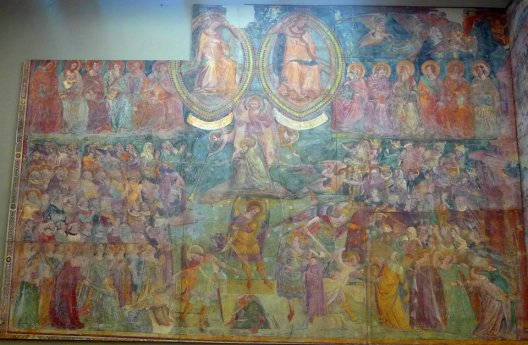 |
|
The second set of scenes is the most familiar; on the left a Last Judgment, on the right of which is a particularly gruesome hell, with a splendid Satan in the centre. It has some surprising elements, but it is the first set that is far more puzzling. It was once thought that the fresco was a response to the Black Death (1348-9), but more recent scholarship, including a study of the costumes, has put it ten years or so earlier. After all, a place of burial is a perfectly appropriate place for a fresco focussing on death. In the bottom left, three young bloods on horseback encounter death in the form of three corpses in various states of decomposition. Above them, hermits in a bleak rocky landscape demonstrate a lifestyle more likely to bring salvation. In the centre, angels and demons hover over a cluster of maimed peasants, fighting for their souls, while to the left a group of well dressed young people amuse themselves in a grove of trees, oblivious to the battle for salvation raging above them. Allegory, then, rather than straightforward narrative. Buonamico Buffalmacco, it seems, was another rather colourful character. 'Buffalmacco' is a nickname, meaning 'The Joker'. He makes regular appearances as a comic character in Boccaccio's Decameron. In these stories, along with his painter pal Bruno, he makes life hell for a rather dim-witted painter called Calandrino by playing tricks on him - they pretend he has become invisible, they steal his pig, and more. To be honest, these stories are rather laboured and not Boccaccio's best. So what is the connection? Did Boccaccio know the frescos, and did he know Buffalmacco personally? We don't know. Some people feel that Buffalmacco himself didn't really exist - another joke - though the general view is that he did. But the really intriguing idea is that this fresco actually was the post-plague inspiration for the Decameron. Here's that scene with the well dressed young people enjoying themselves, oblivious to death triumphing all around. In the Decameron, seven young women and three young men flee the plague and idle their time away telling stories. Convincing? |
|
|
|
|
Finally - let's pop back into the Duomo, and look for a most unwelcome out-of-context twenty-first century intrusion. The rather murky picture on the left below was taken on our first visit in 2000. On the right is a the same scene from 2012. What has happened? BLUE PLASTIC CHAIRS! They may have been there for a special event - I certainly hope they are not a permanent fixture. |
|
|
|
|
